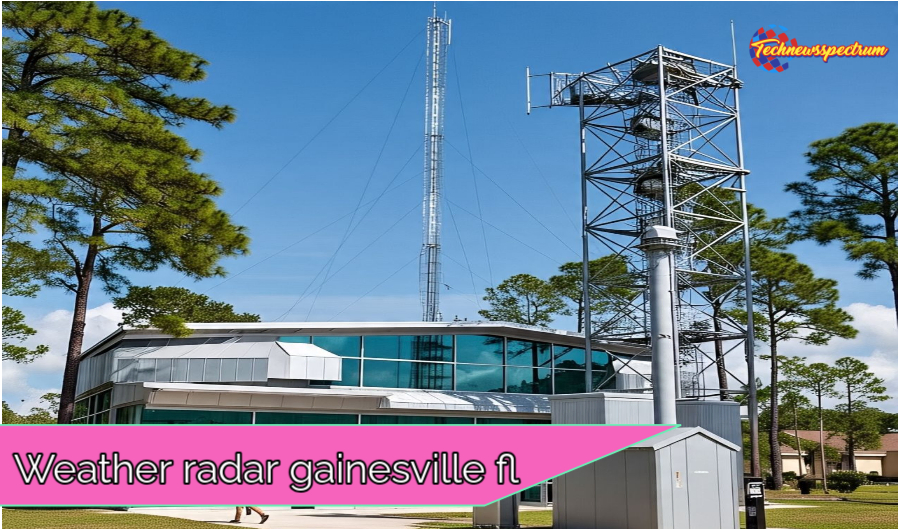Weather Radar Gainesville FL: Uncover 9 Powerful Insights into Local Forecasting
Table Of Content
Introduction
Background: A Brief History of Weather Radar in Florida
What Is Weather Radar and How Does It Work?
Gainesville’s Unique Weather Patterns
How Gainesville Weather Radar Enhances Safety
Local Radar Stations and Coverage Areas
Real-Life Use Cases and Examples
Benefits of Real-Time Radar in Gainesville
Differences Between Radar, Satellite and Forecast Models
Accessing Gainesville Weather Radar Online
The Role of Doppler Radar in Gainesville Weather
Common Misconceptions About Weather Radar
FAQs
Conclusion
Introduction
In Gainesville, Florida—a city known for its warm, humid summers and stormy skies—weather radar is more than just a technical tool. It’s a lifesaving system deeply woven into everyday life. Whether it’s a pop-up thunderstorm in July or a hurricane warning in September, weather radar Gainesville FL plays a crucial role in ensuring public safety, informing agricultural operations and enhancing emergency response strategies.
The importance of localized radar can’t be overstated. Unlike broader satellite images or national forecasts, weather radar hones in on real-time, hyperlocal conditions, helping residents and officials make critical decisions. Let’s explore the fascinating workings of this system, Gainesville’s unique atmospheric challenges and how radar technology helps safeguard life and property.
Background: A Brief History of Weather Radar in Florida
Early Meteorological Tools
Before radar, meteorologists in Florida relied on basic tools like barometers, anemometers and surface weather maps to make forecasts. These methods offered some insight but lacked real-time accuracy.
Evolution to Doppler Technology
In the 1950s and 60s, radar technology started being used to track storms but it wasn’t until the 1980s that Doppler radar became a game-changer. Doppler’s ability to detect wind speed and direction inside storms allowed for better tornado and hurricane warnings. Gainesville’s proximity to both the Gulf and Atlantic makes this tech even more critical.
What Is Weather Radar and How Does It Work?
Radar Waves and Precipitation
Weather radar emits radio waves that bounce off precipitation like raindrops, snow or hail. The radar then measures the time it takes for those signals to return and their strength, translating that data into visual maps of storm intensity, speed and movement.
Types of Radar Used in Weather Forecasting
| Radar Type | Function | Example in Gainesville |
| Doppler Radar | Measures velocity & precipitation | Storm tracking |
| Dual-Polarization Radar | Detects precipitation type | Hail vs rain alerts |
| Phased-Array Radar | Rapid updates of storm data | Experimental but promising |
Gainesville’s Unique Weather Patterns
Subtropical Climate Influence
Gainesville lies in a humid subtropical zone, which means summers are hot and wet, with frequent thunderstorms, while winters are mild. Afternoon lightning storms are common due to sea breeze collisions.
Common Weather Challenges in the Area
- Tropical Storms & Hurricanes
- Flash Flooding
- Heatwaves
- Fog & Low Visibility in Winter
All of these are best monitored using weather radar Gainesville FL, especially when paired with satellite imagery and forecasting models.
How Gainesville Weather Radar Enhances Safety
Severe Storm Warnings
Weather radar provides up-to-the-minute information about hail size, tornado formation and wind speed, which helps the National Weather Service (NWS) and local agencies issue timely alerts.
Hurricane Preparedness
During hurricane season, radar helps Gainesville residents monitor:
- Storm landfall predictions
- Rainfall accumulation
- Wind field mapping
This allows quicker evacuation plans and shelter organization.
Local Radar Stations and Coverage Areas
Key NOAA Installations Near Gainesville
- NWS Jacksonville (JAX)
- Tampa Bay Radar Facility
- Melbourne NEXRAD Station
These facilities provide overlapping radar coverage, enhancing accuracy.
Private Weather Services and Apps
Apps like RadarScope, MyRadar and WeatherBug integrate public radar data for easy mobile access, allowing Gainesville citizens to track weather in real time.
Real-Life Use Cases and Examples
Tornado Detection Success Story
In 2021, a radar signature spotted a forming tornado near Alachua County. Thanks to the alert, schools went into lockdown and no lives were lost.
Local Event Forecasting and Planning
University of Florida athletic events rely heavily on radar to avoid scheduling during lightning threats or excessive heat days, protecting thousands of fans and athletes.
Benefits of Real-Time Radar in Gainesville
Public Awareness and Emergency Response
Radar enhances:
- 911 dispatch coordination
- Shelter-in-place warnings
- Road closure alerts
Environmental Monitoring and Agriculture
- Farmers track rainfall during planting seasons
- Wildlife officers monitor flooding in protected zones
This data drives climate adaptation plans and sustainable farming.
Differences Between Radar, Satellite and Forecast Models
Radar vs Satellite Imaging
| Feature | Radar | Satellite |
| Primary Function | Measures precipitation and wind | Captures cloud images |
| Resolution | High (localized) | Medium (global coverage) |
| Delay | Real-time | Slight delay due to orbiting |
Role of Computer Models
Models like GFS, ECMWF and HRRR combine radar and satellite input to create short-term and long-term forecasts, enhancing prediction confidence.
Accessing Gainesville Weather Radar Online
Recommended Government Sources
These tools are free, ad-free and accurate.
Best Apps for Mobile Radar Tracking
- RadarScope: For professionals
- MyRadar: Animated storm tracking
- The Weather Channel App: User-friendly interface with radar overlay
The Role of Doppler Radar in Gainesville Weather
Dual-Polarization and Resolution
Newer Doppler systems use dual-polarization, providing better identification of hail, sleet and heavy rain. It also reduces false alarms in alerts.
Tracking Rainfall Intensity and Wind Shear
This is critical for:
- Flood forecasting
- Microburst identification
- Aviation safety at Gainesville Regional Airport
Common Misconceptions About Weather Radar
“It Only Works in Rain” and Other Myths
Radar also detects hail, snow and sometimes dust or ash clouds. It’s not just a “rain detector.”
The Truth About Radar Range Limits
Radar is limited by Earth’s curvature. That’s why multiple stations help fill gaps around Gainesville.
FAQs
1. Is weather radar in Gainesville updated in real-time?
Yes, most sources like NOAA and RadarScope update every 2–5 minutes.
2. Can radar detect tornadoes in Gainesville?
Radar can identify rotational patterns that suggest tornado formation, triggering official warnings.
3. What app is best for tracking Gainesville weather?
MyRadar and RadarScope are top-rated for their ease of use and detailed layers.
4. How far can radar near Gainesville detect weather?
Up to 230 miles, though accuracy diminishes with distance.
5. Does radar work at night?
Yes, radar works 24/7 regardless of sunlight.
6. Can I use radar data for outdoor planning?
Absolutely. It’s commonly used for planning sports, construction and public events.
Conclusion
The weather radar Gainesville FL network is more than just a forecast tool—it’s a lifeline. With Gainesville’s variable climate, prone to thunderstorms, hurricanes and flooding, having accurate, real-time data is essential. Radar helps individuals, farmers, emergency personnel and government agencies make smarter, faster decisions.Investing in public awareness and mobile access tools ensures that every Gainesville resident can be a step ahead of the storm. So the next time dark clouds loom over Ben Hill Griffin Stadium or a tropical system swirls off the coast, remember: Gainesville’s radar is already on the job.







